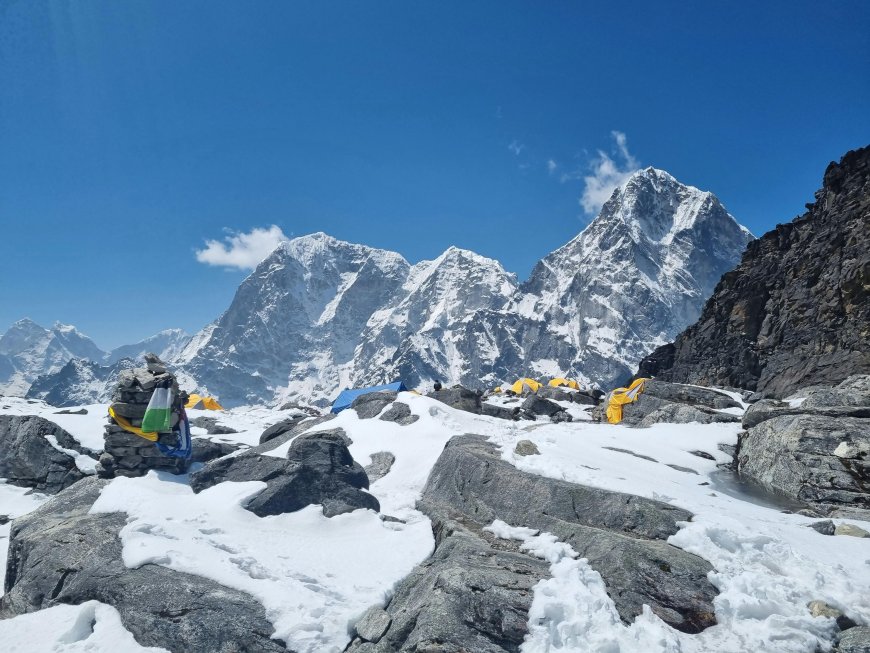Is Altitude Sickness Common on the Everest Base Camp Trek, and How Can I Prevent It?
Altitude sickness is common on the Everest Base Camp Trek due to high elevation, but with proper acclimatization and a slow pace, it can be safely managed. This guide shares personal tips to prevent it and enjoy the journey.

The Everest Base Camp Trek was a dream I carried for years. When I finally joined a group to walk the trail, I was filled with excitement. But along with that excitement came a quiet fear altitude sickness. I had heard stories of trekkers turning back, feeling weak, dizzy, or worse. That question kept coming up in my mind: Is altitude sickness common on the Everest Base Camp Trek, and how can I prevent it?
Now that Ive completed the trek, I want to share what I experienced and learned so you can prepare wisely and enjoy every step.
What Is Altitude Sickness?
Altitude sickness, or Acute Mountain Sickness (AMS), happens when your body struggles to adjust to lower oxygen levels at higher elevations. As we go higher, the air becomes thinner. That means we breathe in less oxygen with each breath.
Some common symptoms include:
-
Headaches
-
Dizziness
-
Nausea
-
Loss of appetite
-
Trouble sleeping
It can affect anyone, no matter how fit or experienced. On the Everest Base Camp Trek, even strong trekkers can feel weak at high altitudes.
How Common Is It on the Trek?
Altitude sickness is very common on the Everest Base Camp Trek. Thats because the trail leads deep into the heart of the Himalayas where the oxygen level drops quickly as we climb.
Here are the key trek details:
-
Average trek duration: 1214 days
-
Total round-trip distance: Around 130 km (81 miles)
-
Base camp elevation: 5,364 meters (17,598 feet)
-
Highest point (Kala Patthar): 5,545 meters (18,192 feet)
By the time we reached Namche Bazaar at 3,440 meters, many in our group were feeling the effects. A few had headaches. Some felt tired, even after short walks. Thats when we truly understood that going slowly was not just a suggestion it was a necessity.
How We Prevented Altitude Sickness
We took a few simple but important steps to avoid getting seriously sick. These small choices made a big difference on our journey.
1. We Walked Slowly
Our guide reminded us every day: "Go slow. Your body needs time." We kept a steady pace and stopped to rest often. No one rushed ahead. Even when we felt strong, we respected the altitude.
We also followed the golden rule: climb high, sleep low. That meant we sometimes took short hikes above our sleeping point, then returned to camp to rest. This helped our bodies adjust.
2. We Took Rest Days
We spent extra nights in places like Namche Bazaar and Dingboche. These rest days werent for doing nothing we still did short hikes. But sleeping at the same altitude helped us acclimatize and stay strong.
3. We Drank Lots of Water
Each of us drank 3 to 4 liters of water daily. Hydration was key. We also avoided alcohol and caffeine during the higher parts of the trek. That helped our bodies perform better.
4. We Ate Well
Even when our appetites dropped, we made sure to eat. Warm soups, dal bhat, and pasta kept us fueled. Our guides encouraged us to eat lots of carbs, which gave us energy and helped with acclimatization.
5. We Spoke Up
One night in Lobuche, I felt a pounding headache. I told our guide right away. He gave me warm water, asked a few questions, and stayed with me for a while. The headache passed. Talking early helped prevent bigger problems.
What Happens If You Get Sick?
Mild symptoms like headaches or tiredness are common. Resting, hydrating, and taking medicines like Diamox often help. But if the sickness gets worse vomiting, confusion, or chest tightness the only solution is to descend. Fast.
We saw a few trekkers being helped down the mountain. Some were carried by porters. It reminded us how important it is to listen to your body and never ignore symptoms.
A Personal Moment
On the morning we reached Kala Patthar, the wind was cold, and my steps were slow. The air was thin, and my lungs worked hard. But when I saw the sun rise over Everest, everything stopped.
I stood quietly, eyes wide, heart full. That moment made every ache, every deep breath, every careful step worth it. I felt proud. And I felt grateful that I had prepared well enough to make it safely.
Helpful Tips for Future Trekkers
Heres what I would tell anyone planning the Everest Base Camp Trek:
-
Train your body with long hikes before the trek
-
Take rest days for acclimatization seriously
-
Drink plenty of water every day
-
Eat, even when you dont feel hungry
-
Dont be afraid to speak up about how you feel
-
Consider trekking with a guide its safer
-
Keep altitude medicine like Diamox in your bag
Final Thoughts
Altitude sickness is common on the Everest Base Camp Trek, but it doesnt have to stop you. With slow steps, good planning, and care for your body, you can reach base camp safely and enjoy every view along the way.
This trek isnt just a walk in the mountains. Its a lesson in patience, respect, and inner strength. And the reward? Its something youll carry for the rest of your life.


























